WW2 German TANK Box WWII Ostfront RUSSIA Kursk PANZER Trench ART Wehrmacht ARMY
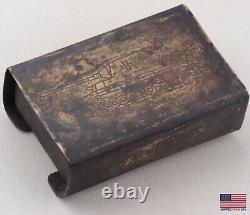
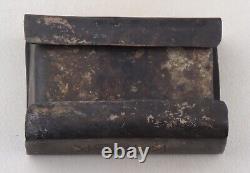
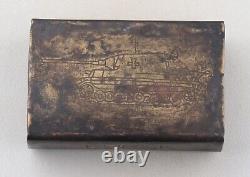
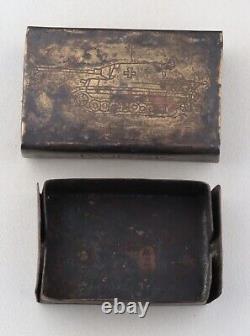
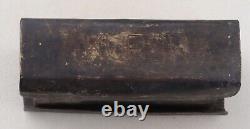
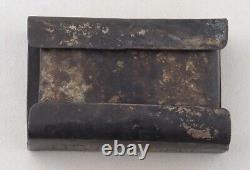
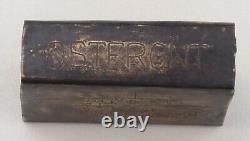


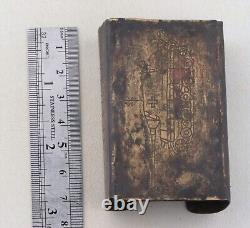
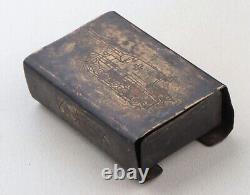
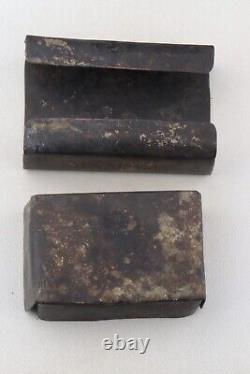
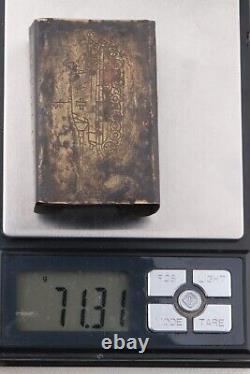


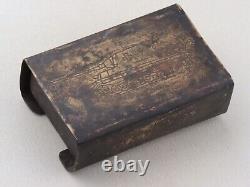


WW2 German TANK Box WWII Ostfront RUSSIA Kursk PANZER Trench ART Handmade engraving Brass 71x42x26 mm 71.31 g? The Battle of Kursk was a major World War II Eastern Front battle between the forces of Germany and the Soviet Union near Kursk in southwestern Russia during the summer of 1943, resulting in a Soviet victory. The Battle of Kursk was the single largest battle in the history of warfare. It, along with the Battle of Stalingrad several months earlier, are the two most oft-cited turning points in the European theatre of the war. It was one of the costliest and fiercest battles of the entire Second World War, with it being the single deadliest armoured battle in history and the opening day of the battle, 5 July, being the single costliest day in the history of aerial warfare.
The battle was also marked by fierce house-to-house fighting and hand-to-hand combat. The battle began with the launch of the German offensive Operation Citadel (German: Unternehmen Zitadelle), on 5 July, which had the objective of pinching off the Kursk salient with attacks on the base of the salient from north and south simultaneously. After the German offensive stalled on the northern side of the salient, on 12 July, the Soviets commenced their Kursk Strategic Offensive Operation with the launch of Operation Kutuzov (Russian:???????) against the rear of the German forces on the same side.
On the southern side, the Soviets also launched powerful counterattacks the same day, one of which led to a large armoured clash, the Battle of Prokhorovka. On 3 August, the Soviets began the second phase of the Kursk Strategic Offensive Operation with the launch of the Belgorod-Kharkov offensive operation (Operation Polkovodets Rumyantsev, ??????????????????) against the German forces on the southern side of the salient. The Germans hoped to weaken the Soviet offensive potential for the summer of 1943 by cutting off and enveloping the forces that they anticipated would be in the Kursk salient. Believed that a victory here would reassert German strength and improve his prestige with his allies, who he thought were considering withdrawing from the war.
It was also hoped that large numbers of Soviet prisoners would be captured to be used as slave labour in the German armaments industry. The Soviet government had foreknowledge of the German intentions, provided in part by British intelligence's analysis of high-level German army radio messages. Aware months in advance that the attack would fall on the neck of the Kursk salient, the Soviets built a defence in depth designed to wear down the German armoured spearhead. The Germans delayed the offensive while they tried to build up their forces and waited for new weapons, giving the Red Army time to construct a series of deep defensive belts and establish a large reserve force for counter-offensives, with one German officer describing Kursk as "another Verdun". The battle was the final strategic offensive that the Germans were able to launch on the Eastern Front.
Because the Allied invasion of Sicily began during the battle, A. Was forced to divert troops training in France to meet the Allied threat in the Mediterranean, rather than using them as a strategic reserve for the Eastern Front.
Cancelled the offensive at Kursk after only a week, in part to divert forces to Italy. Germany's extensive losses of men and tanks ensured that the victorious Soviet Red Army enjoyed the strategic initiative for the remainder of the war. The Battle of Kursk was the first time in the Second World War that a German strategic offensive was halted before it could break through enemy defences and penetrate to its strategic depths. Though the Red Army had succeeded in winter offensives previously, their counter-offensives after the German attack at Kursk were their first successful summer offensives of the war. The battle has been called the last gasp of N.Perfect item for museum or YOUR private collection! Collectibles and antiques - the best investment! + individual discounts for dealers! Please write your questions BEFORE.
Where else will you find such interesting items as not in my store?


